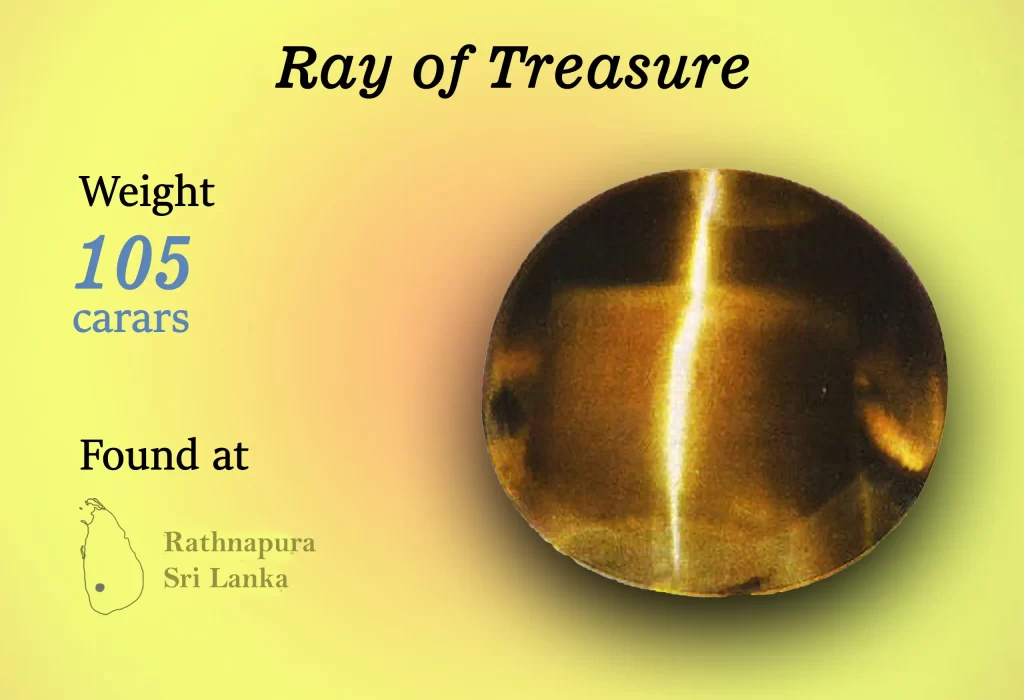Ceylon gems are known for their large exceptional blue sapphires and star corundum. Most of the large sapphires reside amongst the crown Jewels of monarchies and in museums around the world. 17 of the 30 exquisite, large and priceless gemstones originated from Sri Lanka.
The most lauded of them are…
- The Star of Adam
- Giant of the Orient
- Naleem Alexandrite
- Rosser Reeves Star Ruby
- The Eye of the Lion
- Ray Of Treasure
- Logan Blue Sapphire
- Blue Bell of Asia
The Star of Adam
The Star of Adam is privately owned and was discovered in the district of Ratnapura in Sri Lanka, also known as, the ‘Land of Gems’ for the sheer volume of gem-quality sapphires that have originated from its mineral rich soil.
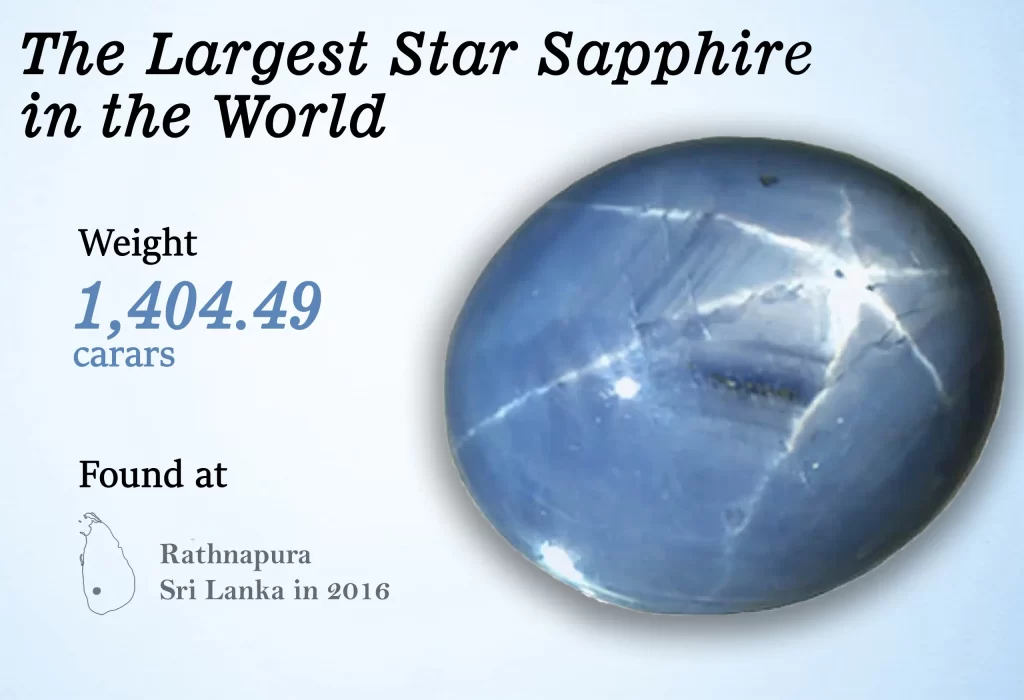
Giant of the Orient
This huge blue sapphire was said to have been discovered near Adams Peak in Sri Lanka in 1902. A leading exporter at the time, O.L.M Macan Marker & Co purchased this rough uncut gem weighing more than 600 carats. A local gem cutter worked on the rough gemstone to uncover its true potential. Once cut and polished it transformed into an exquisite 466 carat gemstone. This beautiful corn flower blue hued cushion cut gemstone is one of the rarest and most exquisite blue sapphires ever found. It was also considered the largest faceted blue sapphire of its kind ever discovered.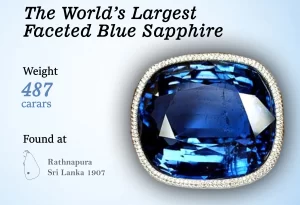
Named the Giant of the Orient its full saturation and intense medium blue colour with underlaying orange red hues that can be seen under ultraviolet light was valued at $7000 back in 1902. The Giant of the orient was out of the public eye for nearly 100 years having been sold to an anonymous American private collector in 1907. It remained so until 2004 when it re appeared in the Christie’s Magnificent Jewels auction catalogue.
Some experts believe that the stone had 20 carat discrepancies. The Christie’s auction catalogue reflected either an error in the accuracy of the equipment of that time or a simple recording error. After the Christie’s event which failed to obtain the required price, it was sold to an anonymous British Buyer. The stone has not been seen since.
Logan Blue Sapphire
According to the GIA’s statement in 1997 the Logan Sapphire is confirmed to be a natural gemstone with no evidence of being heat treated. When viewed under ultraviolet light it gives out a moderate reddish orange florescence. This stone is presently displayed at Smithsonian Institution’s Natural Museum of Natural History.
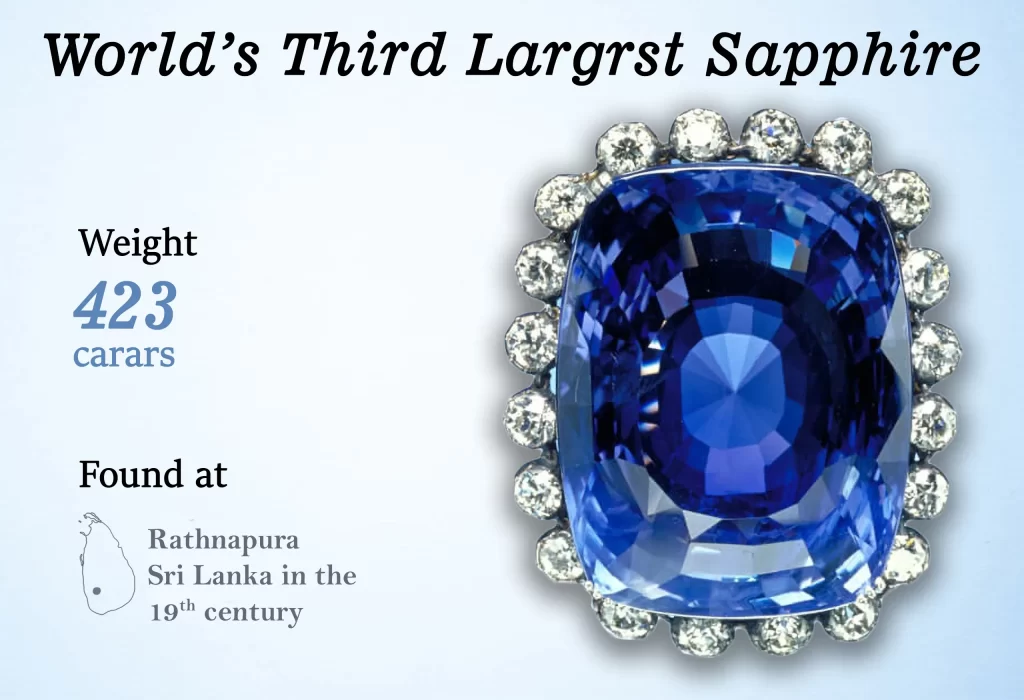
Blue Bell of Asia
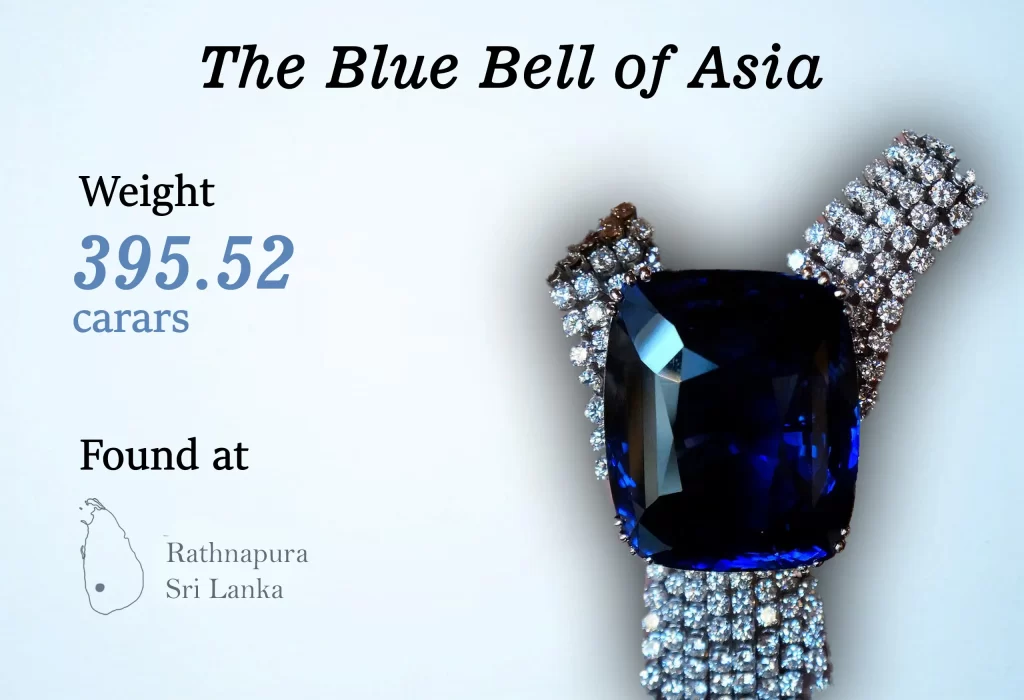
Naleem Alexandrite
An Alexandrite is famed for its hue under specific lighting conditions. The stone will appear reddish under incident light and green in normal sunlight as our eyes are sensitive to the colour green. 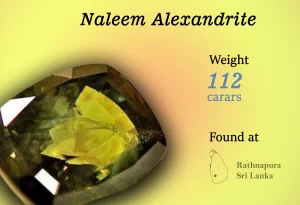 This type of natural stone is extremely rare and priceless. The Naleem Alexandrite is exceptionally large for this type of stone and unconfirmed reports state that it is possibly the largest Alexandrite in the world weighing 112 carats.
This type of natural stone is extremely rare and priceless. The Naleem Alexandrite is exceptionally large for this type of stone and unconfirmed reports state that it is possibly the largest Alexandrite in the world weighing 112 carats.
The Alexandrite was sold by the late famous gem merchant from China Fort in Beruwala Sri Lanka. The stone was named after the seller. The exquisite Al Haj Naleem, is believed to be the most expensive of its kind in the world. This precious stone is valued at over $100 million. The current owner of the Naleem Alexandrite is unknown, and the stone has not been seen since 2011.
Rosser Reeves Star Ruby
The Rosser Reeves star Ruby is one of the world’s largest and finest star rubies found in Sri Lanka. This exquisite stone is renowned for its colour and its well-defined star pattern. This stone initially weighed 140 carats but was reassessed at 138 carats after it was re-polished to remove any scratches on its surface. This Star sapphire is an oval cabochon-cut with dome displays and very precise asterism. Generally, almost all the star sapphires from Sri Lanka are blue to gray due to iron contamination which makes the Rosser Reeves Ruby even more astonishing for its exception colour and size.
This Star sapphire is an oval cabochon-cut with dome displays and very precise asterism. Generally, almost all the star sapphires from Sri Lanka are blue to gray due to iron contamination which makes the Rosser Reeves Ruby even more astonishing for its exception colour and size.
The ruby got its name from its one-time owner Rosser Reeves, who purchased it in 1950. The Ruby accompanied him wherever he travelled as he believed it brought him good luck. In the year 1965 Mr. and Mrs. Rosser Reeves donated the star ruby to the Smithsonian Institution’s National Museum of Natural History, where it is on display to date.
The Eye of the Lion
This priceless cabochon cut Chrysoberyl Cat’s Eye is a spectacular gemstone weighing a whopping 465 carats. Discovered in the late 1800’s in a paddy field in Pelmadulla in the Ratnapura District. The paddy field was owned by Iddamalgoda Kumarihamy an aristrocratic chieftain who was said to be a descendant of King Rajasinghe the first who ruled the Island from 1581-1593. 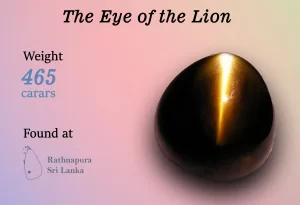 She was also Chief Custodian of the Saman Devale, a 750-year-old temple serving the region.
She was also Chief Custodian of the Saman Devale, a 750-year-old temple serving the region.
The Grand Lady Iddamalgoda Kumarihamy had four daughters and gifted the uncut Cats-Eye to her eldest daughter’s husband who was from another prominent family in the area. The stone was preserved in its rough form. It was then inherited by his son who was the first born Grandson of Iddamalgoda Kumarihamy.
Throughout history the lion has been a symbol of power often emblazoned on coats of arms, and the national flag of Sri Lanaka. Thus, the name “The Eye of the Lion” to represent the characteristics of a proud and brave nation.
Subsequently, the Smithsonian expressed interest in acquiring the gemstone in 1978, nothing was heard of it for nearly three decades. The stone then resurface in 2006 to AGTA gemological testing center’s New York lab in the hands of gemstone dealer Jeffery Bergman of Primage, Bangkok, Thailand.
Ray Of Treasure
